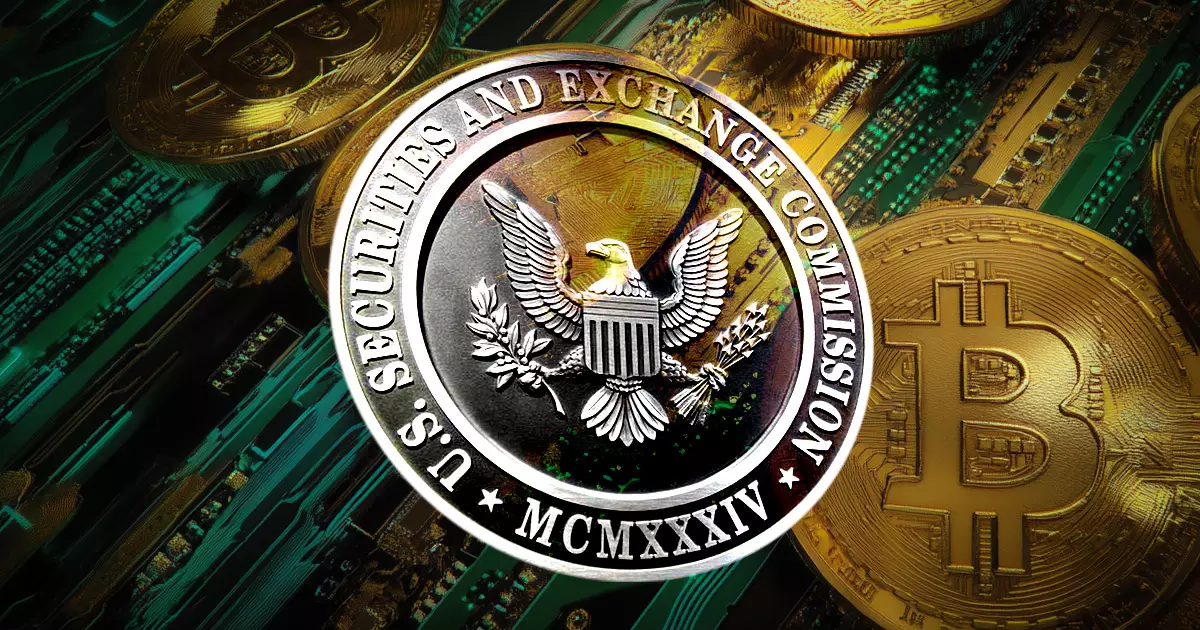In a striking move that showcases the dynamic interplay between traditional finance and the burgeoning world of cryptocurrencies, the US Securities and Exchange Commission (SEC) recently convened pivotal meetings with influential players like BlackRock and the Crypto Council for Innovation’s Proof of Stake Alliance. These engagements, directed at resolving regulatory vagueness surrounding cryptocurrency exchange-traded products (ETPs), underscore the urgency with which institutional interests are converging around crypto-assets. It signifies both an opportunity and a challenge for regulators striving to balance innovation with investor protection—a feat that, if handled wisely, could boost market confidence but if mismanaged, could lead to chaos.
The involvement of a financial giant such as BlackRock in these discussions cannot be understated. BlackRock’s expertise in traditional ETFs, characterized by their robust structures and established market credentials, places them in a strategic position to advocate for reforms that would facilitate the integration of crypto assets into sophisticated financial products. Their discussions on in-kind redemptions, transmitted through detailed workflows, highlight a nuanced understanding of what crypto ETPs require to attract both retail and institutional investors. However, one must question whether these dialogues genuinely prioritize the safeguarding of investors or merely serve the interests of behemoths jostling for dominance in the rapidly evolving financial arena.
Staking: The Missing Piece in the ETP Puzzle?
The proof-of-stake (PoS) consensus mechanism is an essential component of many leading cryptocurrencies today, yet its viability within the framework of ETPs remains contentious. The SEC’s consultations with the Proof of Stake Alliance, composed of visionary firms committed to advancing staking methodologies, reveal a palpable tension between innovation and regulation. While discussions revolved around various staking models—liquid, custodial, and non-custodial—the regulatory environment remains woefully uncertain.
In their presentations, industry insiders made a compelling case that excluding staking from ETPs could severely undermine investor returns and the operational utility of these new-age digital assets. However, one cannot help but wonder if this emphasis on staking rewards overlooks a significant risk: the potential instability caused by merging volatile crypto assets with traditional financial structures. Would the SEC be setting a precedent that could lead to reckless investor behavior, buoyed by the promise of seemingly easy returns without fully comprehending the inherent risks?
Voices of the Industry: Pragmatism or Manipulation?
Prominent figures such as Lucas Bruder from Jito Labs and Kyle Samani of Multicoin Capital echoed thoughts that many in the crypto space share—a belief that regulatory adaptation is not merely necessary but imperative. Their proposals for the “Services Model” and the “Liquid Staking Token Model” present intriguing avenues for compliance while retaining investment attractiveness. Yet, it raises an unsettling possibility: are these strategies genuinely rooted in regulatory adherence, or do they risk prioritizing industry profits above the essential safeguards for the average investor?
With powerful financial entities entangled in this evolving narrative and actively advocating for regulatory advancements, there is a danger that the nuanced dialogue may tilt in favor of financial elite at the expense of a less informed investor base. If regulations continue to be influenced by corporate interests, will we find ourselves in a scenario where the regulatory framework caters more to profit-driven motives rather than the foundational integrity of asset management?
A Call for Balanced Regulatory Innovation
The SEC’s ongoing review process, which now includes crucial input from major players in both traditional finance and cryptocurrency, highlights a critical juncture. The path forward could lead to an environment rich with financial opportunities or descend into an unfocused, chaotic market overwhelmed by speculative ventures.
While the SEC’s doors may be open for dialogue, it requires unwavering vigilance to ensure that the resulting regulatory framework protects investors while nurturing innovation. As the landscape for crypto ETPs continues to evolve, focusing on creating a balanced regulatory approach will be imperative—not only for institutional giants but also for the everyday investor navigating the complex world of cryptocurrency. The stakes have never been higher, and the repercussions of unfolding decisions could reverberate throughout the financial world for years to come.

